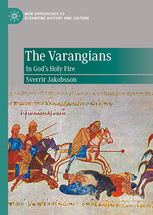Back in that distant golden age which was 2018, people, it seems, were still not very happy. In fact, so miserable were they that it took a team of scientist to prove that 2018 was not, in fact, the worst year ever, despite a new polio-like disease that could appear at any moment, fear of global warming and Trump still being president.
The experts unanimously agreed on the year 536 and perhaps inevitably, it was all the fault of Iceland. Apparently, a volcanic eruption in the-still uninhabited island at around that time blocked the sun from the sky for 18 months and led to widespread crop-failure and famine. If this makes the Eyjafjallajökull eruption of 2010, which grounded all flights for a week, seem like a mere speck of dust, then the bubonic plague which that year spread from Egypt and across Europe and killed some 50 million people makes Covid look like a case of the sniffles. Also, it was uncommonly cold, worth remembering now that Iceland is going through an uncharacteristic dry spell.
Even the horrors of 2020 (I, for one have put on 10 kilos watching Netflix) can´t hold a candle to 536. Now that we are in the endgame with a mere weeks to go, this Annus Horriblis really must try harder if it is to beat the king.
And speaking of kings, Justinian the First of Byzantium, also known for building the Hagia Sophia, was at the time busy reconquering the Western Roman Empire, ruling over Italy, North Africa and Spain as well as the East. When the plague reached Constantinople in 541, it killed around 40% of the inhabitants. Had it not been for this, who knows, perhaps the Roman Empire would have been reconstituted, the Middle Ages as we know them never happened, and Varangians perhaps never become the elite forces of the Eastern Emperor?
Read more in the Time Magazine article here: https://time.com/5460027/worst-year-history/
For more detailed information, here is an interview by Ann Gibbon with Harvard Medievalist Michael McCormick: https://www.sciencemag.org/news/2018/11/why-536-was-worst-year-be-alive

